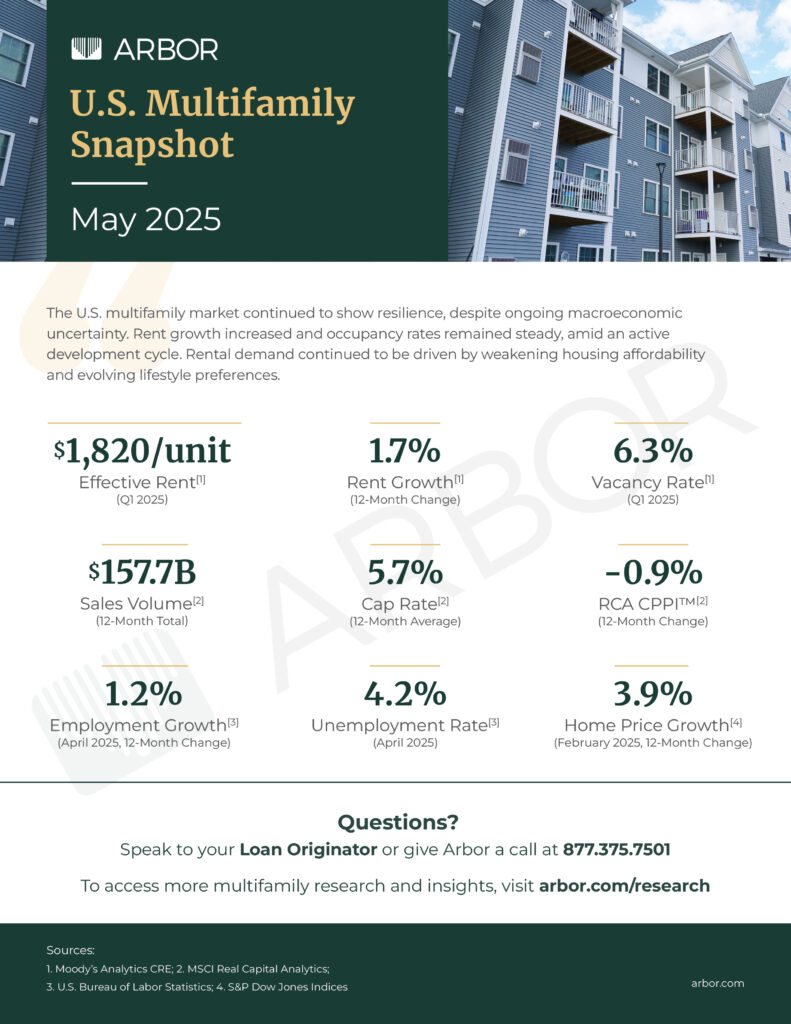U.S. Multifamily Market Snapshot — May 2025

The U.S. multifamily market continued to settle into a normalized cycle during the first quarter of 2025, despite ongoing uncertainties surrounding the global economy and labor market. Rent growth remained steady, while occupancy rates have withstood the historically high levels of construction activity seen over the past two years, which appears to have peaked. There is a rising tide of optimism for the multifamily sector ahead, and investors are taking advantage of market opportunities.
Renters have accounted for the majority of household growth during the current cycle, as rental households increased at double the rate of owner-occupied homes. Stubbornly high home prices and mortgage rates, making homeownership less attainable for many would-be home buyers, are expected to continue to drive demand for rental housing over the longer run. Additionally, evolving preferences toward lifestyle renting show that many renters expect that they will rent for the foreseeable future.
Rental demand continued to drive rent growth and steady vacancy rates amid high development activity. According to data from Moody’s Analytics CRE, effective rent growth nationally climbed 1.7% over the last 12 months, and remains more than 20% higher than in 2019 (prior to the pandemic housing demand boom). Despite the strong demand, the addition of new supply put upward pressure on vacancy during the quarter. The overall vacancy rate finished at 6.3%, up slightly from the end of 2024, yet remained in line with historical norms.
Investors began to show signs that they are taking advantage of market uncertainties, as deal activity held near pre-pandemic levels. According to MSCI Real Capital Analytics, multifamily sales volume totaled $157.7 billion over the last 12 months, on pace to finish with the highest annual total since 2022, and significantly higher than the 15-year average of $146.1 billion.
However, results of the National Multifamily Housing Council’s (NMHC) latest Quarterly Survey of Apartment Market Conditions signaled that tariffs will have a significant effect on the market. The more than half of apartment executives who responded to the survey after the announcement of tariffs on April 2 were more likely to report worsening market conditions than those who had answered before the news.
Additionally, 68% of participants in NMHC’s Quarterly Survey of Apartment Construction & Development Activity cited the primary causes for delays in construction starts over the past three months were economic uncertainty and economic feasibility (up from 42% and 58%, respectively, in December).
Examining key benchmarks for the sector, the multifamily market’s consistent performance provides a solid foundation for continued expansion despite broader economic uncertainties, while well-positioned multifamily investors consider new opportunities.
Interested in the multifamily real estate investment market? Contact Arbor today to learn about our array of multifamily, single-family rental, and affordable housing financing options and view our multifamily articles and research reports.


